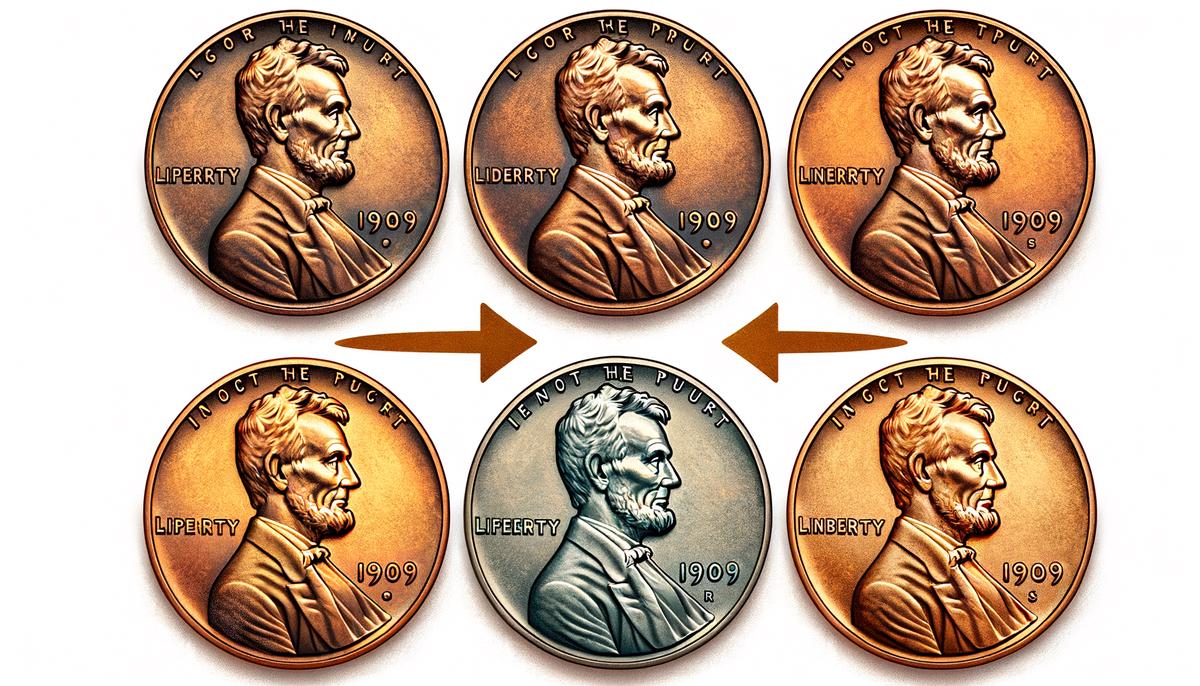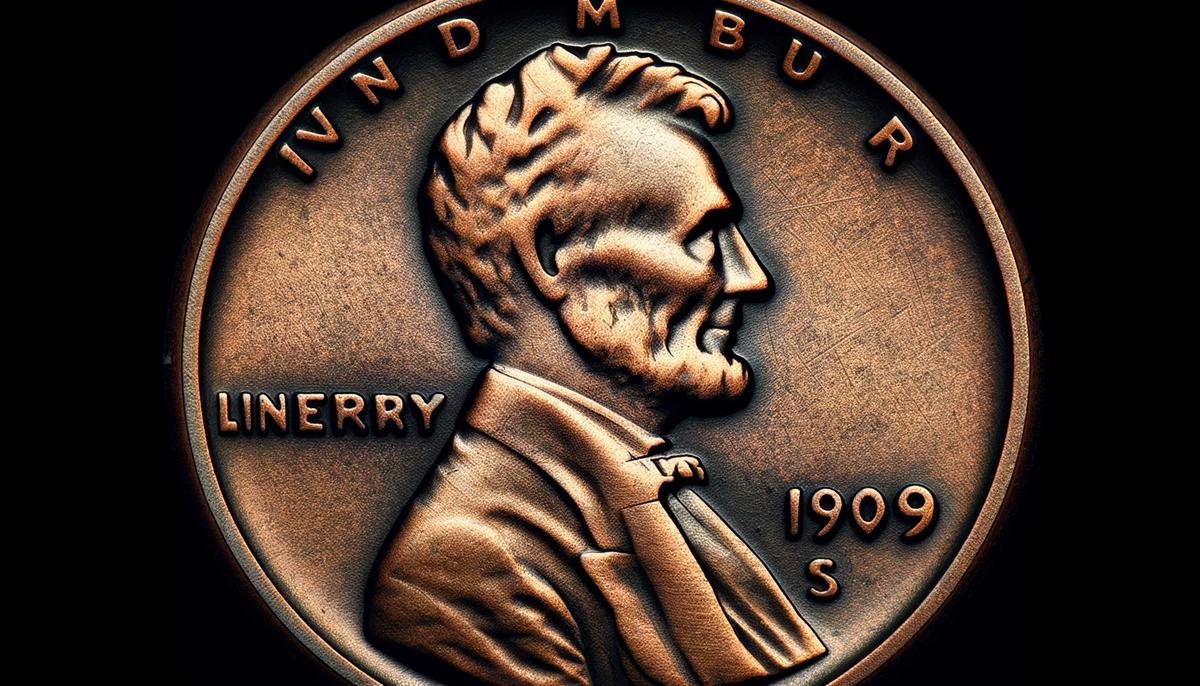Mintmark Authenticity
Spotting a Genuine 1909-S VDB Mintmark
Ever found yourself scrutinizing a 1909-S VDB penny, questioning its authenticity? These little copper treasures are not just pieces of history; they're a numismatist's dream. But with the desire, comes the possibility of counterfeits. Here's a guide on how to tell if the mintmark on your 1909-S VDB penny is genuine.
Look Inside the "S"
The first step in authentication takes us to the "S" mintmark. Genuine 1909-S VDB pennies have a unique trait inside this letter. In the top curve of the "S" a genuine piece will have a tiny, raised dot. With a magnifying glass, this dot can be spotted.
Serifs Stand Straight
Next, focus on the serifs of the "S". On a genuine coin, the serifs will be straight rather than sloping or slanted. A counterfeit may have an "S" that seemingly matches, but the serifs can give it away.
Spot the Mintmark Position
The mintmark's location relative to the date is also important. In 1909, the "S" was hand-punched, leading to some variation in positioning. A genuine coin will show the "S" in different positions, sometimes closer to the 9, other times further away. Compare your coin to verified examples to check the "S" positioning.
VDB With Pride
The VDB initials, referring to the designer Victor David Brenner, are crucial too. Look at the initials on the reverse. On a genuine coin, you'll see a straight crossbar on the B and a slight slant to the feet of the D. Counterfeits often have more rigid, lifeless letters.

Mintmark Location Analysis
When diving into the world of the 1909-S VDB Lincoln cent, the position of the mintmark is a critical detail that shouldn't be overlooked. In 1909, mintmarks were manually punched into the dies at the Philadelphia Mint before being sent to other mints, including San Francisco, where the S mintmarks were added. Because of this process, subtle but notable differences in mintmark positioning can be the key to unveiling a coin's authenticity.
Every original 1909-S VDB penny comes from only one place – the San Francisco Mint. That "S" mintmark is like a signature for the coin, telling you where it was made. However, not all signatures look exactly alike. For the real 1909-S VDB cents, researchers have identified four unique positions of the "S" mintmark, each tied to a specific die used during their production.1
When examining a 1909-S VDB penny, focus on the mintmark's location in relation to the date. In genuine coins, the "S" has a specific placement relative to the numbers representing the year. Sometimes it might be a bit higher, other times slightly to the right. Each of the four genuine mintmark positions has its own distinctive placement. If your coin's "S" is in a significantly different spot than one of these four positions, it could hint at a counterfeit.
Inspecting Victor David Brenner’s Initials
Let's dive a bit deeper with an intriguing aspect that is crucial for verification—the designer's initials, "VDB."
Victor David Brenner, the designer behind the iconic Lincoln cent, left his mark on these coins. After some public controversy, his initials were temporarily removed from the design, only to be reinstated on Lincoln's shoulder in 1918.2 However, it's the specific placement and style of these letters on the 1909-S VDB penny that brings our attention here.
On the reverse side of the coin, at the base, you'll spot the letters "VDB." Authentic 1909-S VDB pennies showcase particular characteristics in these initials.
- The "B" on a genuine penny has a distinctly slanted crossbar, a detail that counterfeiters frequently miss.
- The bottom of the "D" is not flat but slightly angled.
These nuances are subtle but important.
Many counterfeit or altered coins have incorrect VDB initials, lacking the precise slant or distinct looks of the letters seen on genuine coins. Forgers may attempt to add these initials to pennies where they were originally missing, but close inspection can reveal discrepancies. Another hint is the presence of strike doubling on the letters, sometimes seen on authentic coins due to the coining process, but typically absent on counterfeits.
Remember, even coins that pass other tests of authenticity, like having the correct mintmark shape and position, can be caught out by the initials. Giving due attention to these three small letters is a game-changer in spotting an authentic 1909-S VDB penny.
Use a magnifying glass or coin loupe to closely examine those initials. Understanding these fine details is part of the adventure, whether you're a seasoned collector or new to the exciting world of numismatics.

- Lange DW. The Complete Guide to Lincoln Cents. Whitman Publishing; 2005.
- Breen WH. Walter Breen's Complete Encyclopedia of U.S. and Colonial Coins. Doubleday; 1988.
Let Writio, the AI content writer, craft engaging articles for you! This post was created by Writio.
Leave a Reply